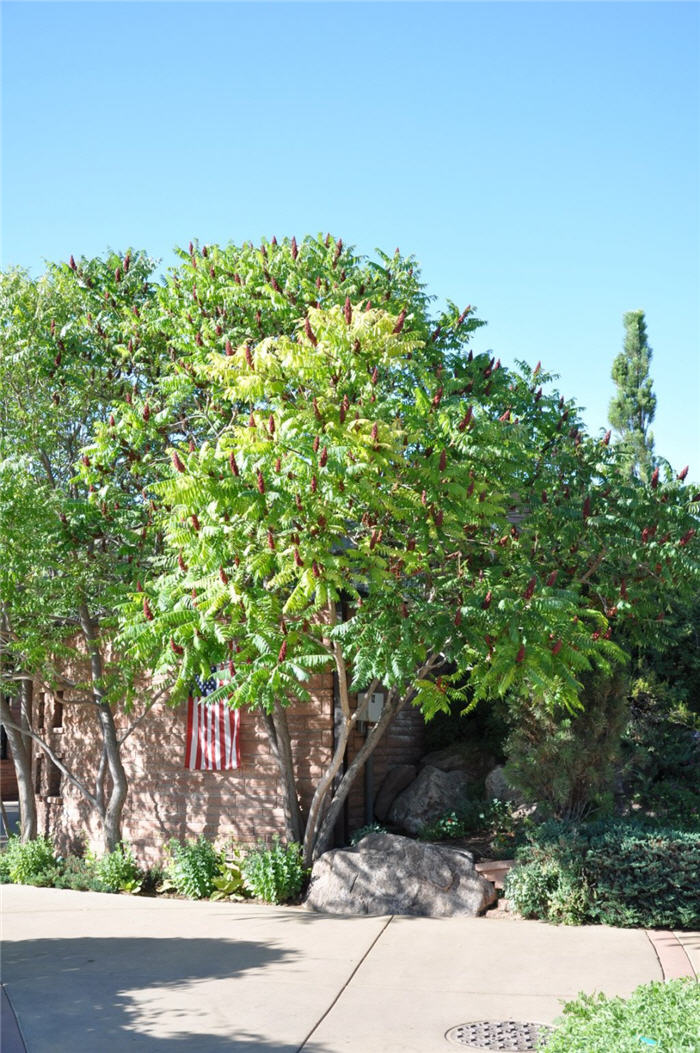| Botanical Name: Rhus typhina | |
| Common Name: Staghorn Sumac |

-
Anatomy
-
Culture
-
Design
Plant Type
Tree, Shrub
Height Range
12-25'
Flower Color
Yellow
Flower Season
Summer
Leaf Color
Green
Bark Color
Brown, Grey
Fruit Color
Red
Fruit Season
Winter, Fall, Persistent
Sun
Full, Half, Shade
Water
Low
Growth Rate
Moderate
Soil Type
Sandy, Clay, Loam, Rocky, Unparticular
Soil Condition
Average, Rich, Poor, Well-drained, Dry
Soil pH
Acid, Neutral, Basic
Adverse Factors
Invasive
Design Styles
Ranch, Spanish, Woodland
Accenting Features
Fall Color, Multi-trunk Tree, Showy Flowers, Silhouette
Seasonal Interest
Winter, Summer, Fall
Location Uses
Background, Shrub Border, Parking Lot, Raised Planter, Walls / Fences
Special Uses
Erosion Control, Screen, Mass Planting, Fire Resistant, Naturalizing
Attracts Wildlife
Birds
Information by: Stephanie Duer
Photographer:
Photographer:
-
Description
-
Notes
Staghorn sumac is an open, spreading shrub or small tree that typically grows 15 to 25 feet tall, and though individual plants are narrow, colonies can spread 20 to 30 feet wide. It is particularly noted for the reddish-brown hairs that cover the young branchlets in somewhat the same way that velvet covers the horns of a stag, hence the common name. It is also noted for its ornamental fruiting clusters and excellent fall foliage color. Large, compound, odd-pinnate leaves (each to 24 inches long) are bright green above during the growing season and glaucous beneath. Leaves turn attractive shades of yellow/orange/red in autumn. Each leaf has 13-27 toothed, lanceolate-oblong leaflets (each to 2 to 5 inches long). Tiny, greenish-yellow flowers bloom in terminal cone-shaped panicles in summer (June-July), with male and female flower cones primarily occurring on separate plants (dioecious). Female flowers produce showy pyramidal fruiting clusters (to 8 inches long), with each cluster containing numerous hairy, berry-like drupes which ripen bright red in autumn, gradually turning dark red as they persist through much of the winter. Fruit is attractive to wildlife. Wood is a warm grey to soft brown and is smooth. Use in naturally-styled landscapes, and where it has room to spread.
Grow in average, dry to medium moisture, well-drained soils in full sun to part shade. Tolerant of a wide range of soils except for those that are poorly drained. Generally tolerant of urban conditions. Tolerates shallow, rocky soils. Drought tolerant. This is a suckering shrub that will form thickets via self-seeding and root suckering; plan accordingly.